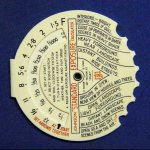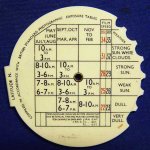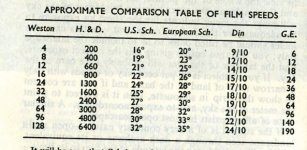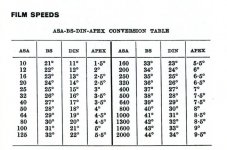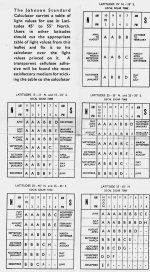ChrisN
Striving
While we're talking about exposure tables, has anyone seen one of these? It's labelled as the "Johnson Standard Exposure Calculator". It consists of a notched dial or circular card which rotates within the outer sleeve. The instructions on the face say:
1. Set at "Start".
2. Select Scene notch and dial clockwise to stop.
3. Turn over - repeat for weather, time and film speed.
4. Read off exposure against f/ratio.
I've been playing with it, and I go alright up to the film speed setting - there are two scales for film speed; one headed BSI with values 34, 31,28,25, and 22; and the other headed "SCH" with values 35, 32, 39, 26, and 23.
Is anyone familiar with these scales for film speed? Possibly a British system that pre-dates the current ASA / DIN standards. I've tried working backwards from "Sunny 16" and I think 100 ASA might be equivalent to BSI 25 / SCH 26 on the scales on this device.
An interesting little gadget - it even makes allowance for filter factor!
1. Set at "Start".
2. Select Scene notch and dial clockwise to stop.
3. Turn over - repeat for weather, time and film speed.
4. Read off exposure against f/ratio.
I've been playing with it, and I go alright up to the film speed setting - there are two scales for film speed; one headed BSI with values 34, 31,28,25, and 22; and the other headed "SCH" with values 35, 32, 39, 26, and 23.
Is anyone familiar with these scales for film speed? Possibly a British system that pre-dates the current ASA / DIN standards. I've tried working backwards from "Sunny 16" and I think 100 ASA might be equivalent to BSI 25 / SCH 26 on the scales on this device.
An interesting little gadget - it even makes allowance for filter factor!


